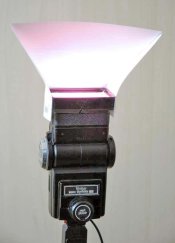Steve Smith
Member
Next weekend I am taking a few pictures at a friend's wedding. This is not a full wedding service as I will just be doing a few formal portraits outside after the ceremony and at the reception, also outside (weather permitting!).
I hardly ever use flash so I'm no expert (obvious as I'm asking a question).
If I understand correctly, I meter as normal for exposure without flash then adjust the flash to give a -1 stop output either by setting it to a wider aperture or a higher ISO.
I have been experimenting with this using one of those alternative technology cameras that you can't put film in and I find (as I expected) that I get some blown out highlights.
As I will be using film (Fuji NPS 160) should I just not worry about this?
I assume that the digital users compensate their exposure a bit to prevent this.
I will be using my Mamiya RB67 with a Vivitar 285.
Thanks,
Steve.
I hardly ever use flash so I'm no expert (obvious as I'm asking a question).
If I understand correctly, I meter as normal for exposure without flash then adjust the flash to give a -1 stop output either by setting it to a wider aperture or a higher ISO.
I have been experimenting with this using one of those alternative technology cameras that you can't put film in and I find (as I expected) that I get some blown out highlights.
As I will be using film (Fuji NPS 160) should I just not worry about this?
I assume that the digital users compensate their exposure a bit to prevent this.
I will be using my Mamiya RB67 with a Vivitar 285.
Thanks,
Steve.












